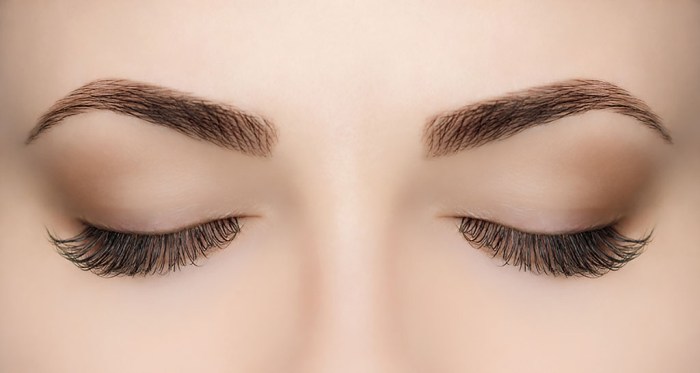The natural arch of the eyebrow follows the contours of the supraorbital ridge, a bony prominence above the eye socket. This arch plays a crucial role in facial expression and communication, conveying emotions and intentions.
Throughout history, eyebrow arches have held cultural significance, with different shapes and styles reflecting societal norms and beauty ideals. In modern times, eyebrow arches continue to be a focus of aesthetic considerations, with various techniques employed to enhance or alter their appearance.
The Natural Arch of the Eyebrow

The eyebrow is a prominent facial feature that plays a crucial role in communication and facial aesthetics. The natural arch of the eyebrow, a subtle curve along its length, contributes significantly to its expressive and aesthetic functions.
Anatomical Structure
The eyebrow consists of a group of hairs that grow in an arched shape above the eye socket. The arch is formed by the underlying brow bone and the direction of hair growth. The height and shape of the arch vary between individuals, influenced by genetics and ethnic origin.
The arch divides the eyebrow into two sections: the medial head and the lateral tail. The medial head, closer to the nose, is typically thicker and straighter, while the lateral tail is thinner and curves upward.
Role in Facial Expression and Communication
The eyebrow arch plays a significant role in non-verbal communication. By raising or lowering the eyebrows, we can convey a wide range of emotions, including surprise, anger, happiness, and sadness.
The arch also contributes to facial symmetry and balance. A well-defined arch can enhance the harmony of the face and create a more attractive appearance.
Cultural Significance
Eyebrow arches have cultural significance in many societies. In some cultures, thick, arched eyebrows are considered a sign of beauty and fertility, while in others, thin, straight eyebrows are preferred.
Eyebrow shapes and styles have evolved over time, influenced by fashion and societal norms. In the past, women often plucked their eyebrows to create a thin, arched shape, while in recent years, thicker, more natural eyebrows have become popular.
Aesthetic Considerations
Eyebrow arches are an important consideration in facial aesthetics. A well-groomed arch can enhance the eyes, balance the face, and create a more youthful appearance.
Various techniques can be used to enhance or alter eyebrow arches, including eyebrow shaping, microblading, and surgical procedures.
Medical Implications
Eyebrow arches can be affected by various medical conditions, including thyroid disease, alopecia, and trichotillomania (compulsive hair pulling).
In some cases, surgical or non-surgical treatments may be necessary to address eyebrow arch issues, such as eyebrow transplantation or brow lift procedures.
Historical Context
The evolution of eyebrow arch styles can be traced back to ancient times. In ancient Egypt, women used kohl to darken and accentuate their eyebrows, creating a thick, arched shape.
During the Renaissance period, women plucked their eyebrows to create a high, arched shape that was considered fashionable at the time.
Comparison of Arches
Eyebrow arches vary significantly between different ethnic groups. Some groups, such as East Asians, tend to have flatter eyebrows, while others, such as Europeans, have more pronounced arches.
These variations are influenced by genetics, environmental factors, and cultural preferences.
Symmetry and Asymmetry
Eyebrow arch symmetry is considered aesthetically pleasing. However, slight asymmetry is common and can add character to the face.
Techniques such as eyebrow shaping and microblading can be used to create symmetry or enhance existing asymmetry, depending on the desired aesthetic outcome.
Grooming and Maintenance, The natural arch of the eyebrow follows the
Eyebrow grooming and maintenance are essential for keeping the eyebrows healthy and aesthetically pleasing. Regular shaping, trimming, and coloring can help maintain a well-defined arch.
Various tools and techniques can be used for eyebrow grooming, including tweezers, scissors, and eyebrow brushes.
Eyebrow Transplantation
Eyebrow transplantation is a surgical procedure that involves transplanting hair follicles from another part of the body to the eyebrow area.
This procedure can be used to restore eyebrows that have been lost due to medical conditions, trauma, or excessive plucking.
Eyebrow Art and Makeup
Eyebrow art and makeup have become increasingly popular in recent years, allowing for creative and unique eyebrow designs.
Techniques such as feathering, ombré, and stenciling can be used to create a wide range of eyebrow looks, from natural to bold and artistic.
Questions and Answers: The Natural Arch Of The Eyebrow Follows The
What is the function of the eyebrow arch?
The eyebrow arch helps to protect the eyes from sweat and debris, and it also plays a role in facial expression and communication.
How do eyebrow shapes vary across different cultures?
Eyebrow shapes vary across different cultures due to factors such as ethnicity, fashion trends, and beauty ideals.
What are some techniques used to enhance eyebrow arches?
Some techniques used to enhance eyebrow arches include plucking, threading, waxing, and microblading.

